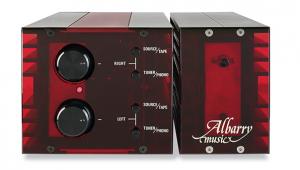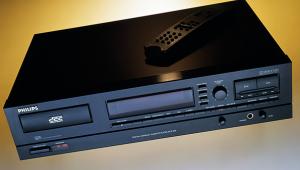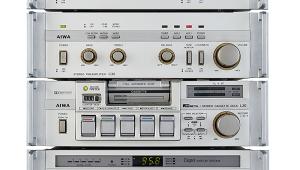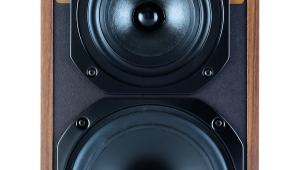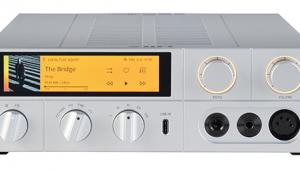Aiwa AX-7400 receiver Page 2
![]() Tim Listens
Tim Listens
The AX-7400 certainly defied some of my expectations. I was prepared for a hard, brittle sound, lacking in refinement, but what it served up was anything but. In fact it was notably smooth and well formed across the midband and right up into the top end. With 30W per channel on tap there was certainly no shortage of level available, though the unit did display traits of 'small amplifier sound' in its lack of extension at the frequency extremes and a hint of compression when listening critically, even at low output.
One could call the bass a bit plump and ill-defined too, but these criticisms only relate to direct comparisons with top-end models that cost a great deal more both then and now. One point in the unit's favour is that with the inputs correctly loaded it gave a near-silent background at all settings of the volume control, which is quite an achievement for a high-gain DIN standard design. There was no buzz from the mains transformer either.
The phrase 'grown up' kept coming to mind as I listened to the AX-7400. It's no headbanger, nor does it major on sparkle and drama. It is instead poised and easy-going, largely tonally neutral across the frequency range it covers yet without ever sounding insipid or uninvolving.
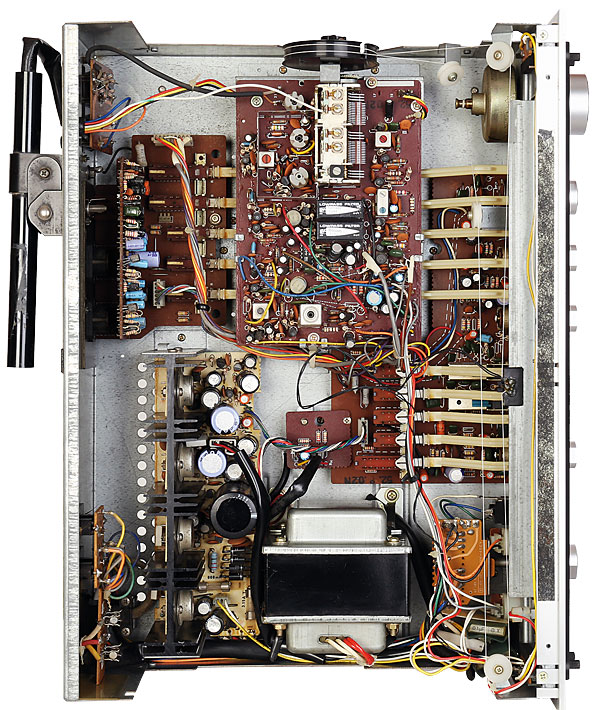
Indeed, its smoothness transformed the simple pop of Alison Moyet's album Raindancing [CBS 450152 2] into something worthy of proper, critical listening. A pleasingly large soundstage and fine vocal presence were the key factors here and at times I could have been convinced it was some exotic specialist design I was listening to rather than a mass-produced Japanese receiver.
In common with many AC-coupled amplifiers, one could hear the bass precision being lost as the volume level was increased, but this seems to be an almost unavoidable consequence of the topology rather than a specific shortcoming of the AX-7400. I expect that with small bookshelf-sized speakers this would not be particularly noticeable in any case.
Relaxing Radio
The appearance in BBC Radio 3's schedule of a performance of Karlheiz Stockhausen's vocal piece 'Stimmung' (the Copenhagen version) gave me an ideal opportunity to try out the tuner section of the AX-7400. Connected to a quality outdoor antenna it gave a near noiseless background, even with the stereo decoder engaged. This was important for the minute of silence that opens the piece, the AX-7400 being clean enough to reveal the shuffling and mumbling in the audience that occurred during this time.
As the performance progressed, the tuner resolved a fine sense of space around the six performers. Solid locations both laterally and in terms of depth made for an engaging listen and suggested that the design of the phase-locked loop stereo decoder was the equal of that found in a decent separate tuner.
The presenters' voices on BBC Radio 4's studio news broadcasts sounded natural and welcoming too, though they were a tad plummier than I have heard them to be when listening using other receivers.
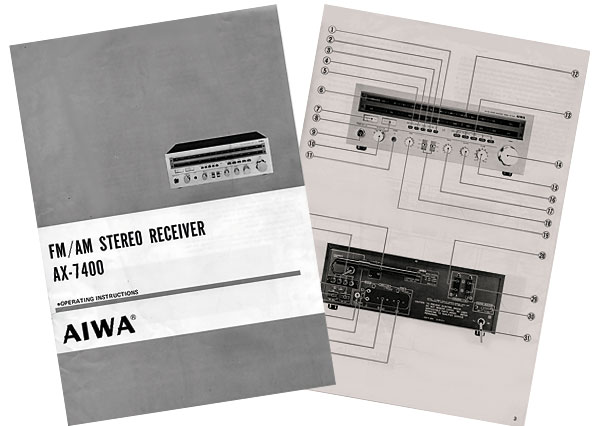
As an add-on for a cassette deck the Aiwa AX-7400 makes perfect sense, the tuner more than good enough as a source to tape from. The amplifier is quite capable of driving loudspeakers of a decent level of quality too, even if it lacks the excitement required of a main system amplifier in the digital age. But as a beautifully crafted way to relax to Radio 3 late into the night the Aiwa AX-7400 makes an excellent argument for itself.
Buying Secondhand
Aiwa's generous guarantee terms were clearly a good bet for the company when one realises how reliable these units have proved to be. Apart from the odd blown bulb and sticking meter almost nothing goes wrong with the AX-7400. It is super tough. Our example is completely original and has not been touched by a soldering iron since it left the factory 42 years ago – not unusual for this design.
True, AC coupling the speakers to the amplifier via capacitors may not be the most technically desirable way to do things, but it does minimise the chance of damage if something goes wrong. Protection circuits and their attendant (and often troublesome) relays are not needed for this topology – in fact the biggest threat to the AX-7400's well-being are carelessly wired DIN speaker plugs.
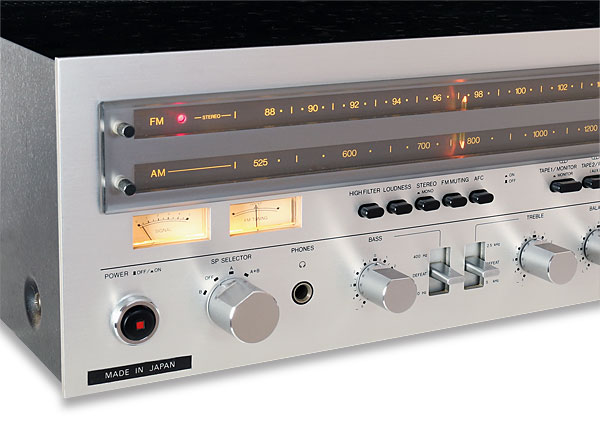
The power amplifier does not require a DC balance adjustment but the bias needs to be set in the normal way. The high density of the components in this area makes this a difficult task and it is most easily accomplished with the power amplifier unit removed from the main chassis.
The FM tuner section, meanwhile, uses ceramic filters whose alignment is pre-set and doesn't drift. However, the discriminator coil and the stereo decoder PLL adjustment may require attention if you find that broadcasts can only be received in mono.
Hi-Fi News Verdict
Cassette decks aside, it's rare to find '70s Aiwa hi-fi products in the UK these days and having seen and heard the AX-7400 receiver this is a great shame. A refined sound, first class construction and attention to detail make this a model that deserved to do better in the marketplace. It's warmly recommended – provided you can find one! The matching cassette deck is the AD-6400. You might want to get one of those too.
